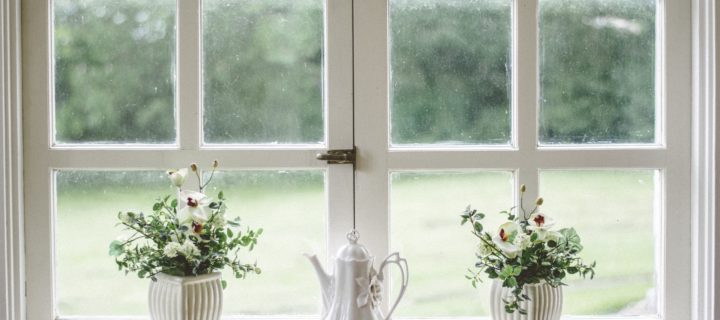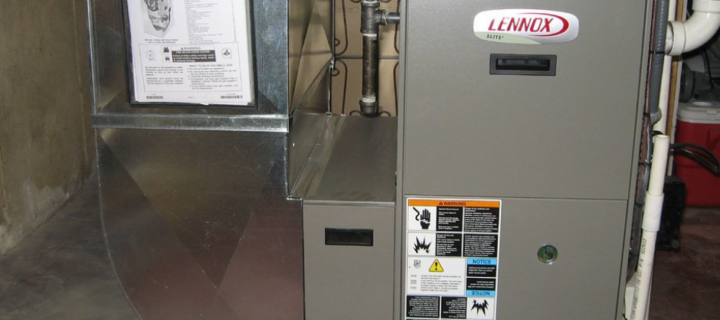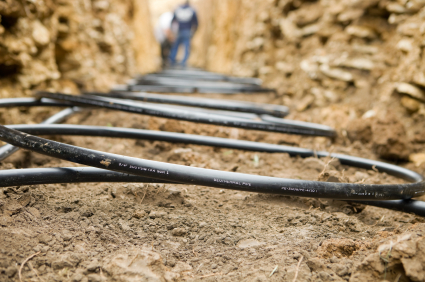The containment efforts for the virus that is currently affecting us all is suggesting that people stay home as much as possible. While this can be seen as an inconvenience for many, you should be seeing it as an opportunity. What should this be an opportunity for, you ask? It’s an opportunity for make all kinds of home improvements that you might have been ignoring for a lot longer than you would like to admit. Whether it is cleaning out your home’s rooms, gutters, or garage, cleaning up the flower beds, or painting a room that you have been ignoring, you now have a really good opportunity to do all of these things. Give the rooms of your home a makeover If you have ever done any DIY home redecorating, giving the rooms of your home a makeover can take a long time. Now that people are being told to stay in their homes for a short while, now is the perfect time to do this. Whether this involves painting, rearranging furniture, or anything else that entails redecorating and cleaning, you will have the opportunity to bring your vision to life. Make the flower beds look better than they ever have before Cleaning out flower beds and pulling out their weeds surrounding them is one of the most time- consuming tasks in home improvement. Very few have the time to do this and that is why it gets ignored often. Think optimistically — by summer, your flower beds will look better than they ever have. Give your gutters and garage some much needed attention Admit it, you have probably been ignoring your gutters or garage for a very long time. If you have been sheltered in place because of what is currently going on, you’ll have a fantastic opportunity to clean your gutters and garage to perfection, making them look just as good as when you first purchased your home. Get ready to paint! Is there a room in your home that you know that you needed to paint for a very long time, only to never find the time to do so? Well guess what: Now you have the perfect opportunity to take as long as you need...
Read MoreWith talks of a harsh, frigid winter already underway, now is the time to consider whether your furnace will be able to operate reliably and efficiently for the duration of winter. If your furnace or and part of your heating system requires repair or replacement, it’s best to address the issue as soon as possible. An expert should perform routine maintenance on your furnace at least once every year to ensure that the unit is performing well and lasts its lifespan. As a homeowner, there are certain things to consider when assessing whether your furnace is in top shape. How old is your furnace? If you have no idea, or if you believe the furnace to be more than 15 years old; chances are that it’s in its last days. The average heating appliance lasts about 10 to 14 years. So, it’s not uncommon for an older furnace to have performance problems. A qualified, experienced technician may be able to get your old furnace up and running at least for one more cold season. Performance Issues A furnace that is in good condition will perform most efficiently. As time goes on, the furnace will deteriorate, and efficiency will decline. Pay close attention to your utility bills. If your heating costs are rising, your furnace may need attention. Also, pay close attention on variations in temperature from room to room. While uneven heating can be due to issues with windows, doors, or insulation; it is often a sign of reduced furnace efficiency. Sound and Appearance Some signs of a failing furnace can be very subtle and go unnoticed until it is too late. Others are obvious, but you must pay close attention. It’s a good idea to take the time to go listen to your furnace while it is running. Pay attention to excessive noise, as it is likely an indication that your furnace requires maintenance. Rust and corrosion may also indicate that your furnace needs to be inspected by a professional. Lastly, if your furnace is emitting an unusual odor, contact a professional right away. When to Purchase a New Furnace Near the end of its lifespan, your furnace may break down often and require frequent repairs and maintenance....
Read MoreWhen it comes to landscaping and curb appeal, trees can be a wonderful addition to your yard. From a functional standpoint, trees can provide shade or even utilize standing water in areas of your yard that may become over saturated when it rains. Aesthetically, trees can provide color and dimension. But certain trees can also be more trouble than they are worth. In fact, certain trees can be a hazard if you are not careful in which varieties to pick to plant in your yard. Here is a list of some trees that you should avoid planting, as well as some varieties you should consider the next time you head to your local nursery. Trees to avoid: Silver Maple While the Silver Maple is a large, fast growing tree that provides lots of shade; Its rapid rate of growth makes for brittle limbs. Brittle limbs are more likely to break during storms and could cause property damage or worse, injuries. In addition to brittle limbs, the Silver Maple also has a shallow root system. Because the roots remain closer to the surface, they often cause cracks in sidewalks and driveways. Ash Unlike the Silver Maple, Ash trees tend to be very sturdy. But the health of these trees is threatened here in the Midwest by an insect called the emerald ash borer. The emerald ash borer is a small beetle that reproduces inside Ash trees, causing loss of bark and damage to the branches. Weakened branches pose a safety issue, and could cause damage to property. Because the emerald ash borer has become so prominent in Ohio it is best to avoid planting Ash trees, especially in residential areas. Existing Ash trees should be monitored closely by professionals for health and stability. Willow Possibly one of the most recognizable of all trees, willow trees have long, slender branches that are beautiful to look at. The downside of the Willow tree is its root system. Willows have a very aggressive root system that craves water, thus causing damage to sewer lines in residential areas. In addition to its invasive root system, the Willow tree has weak, brittle wood that can pose a hazard during storms. Lastly, compared to most other...
Read MoreSummer will be over before we you know it, and you may be thinking about getting a head start on preparing your home for fall and winter. One of the most important things you can do to prepare for the cooler seasons is inspecting your furnace for signs of wear and considering the repair or replacement of a broken system. It can be difficult to know when you should have your furnace surfaced by a professional and repaired or whether you should have your system replaced in its entirety. As a homeowner in the Midwest, you probably understand the importance of having an operational furnace for the winter. A faulty heating system can turn even a mildly frigid day into an uncomfortable situation. You can ensure your family’s comfort throughout the cold months by addressing your furnaces needs in the summer or early fall before the chilly weather sets in. Identifying issues early on allows time for you to have the necessary repairs done, or have the unit replaced by professionals. By planning ahead, you can research options and budget for the expense. While situations vary, these tips will help you learn about the best time to service your furnace, problems you may encounter and whether to repair or replace your system in each scenario. Scenario 1: Your furnace is emitting carbon monoxide- Any system that could expose you and your family to carbon monoxide needs to be replaced as soon as possible. A furnace with a cracked combustion chamber allows carbon monoxide to leak into your home and should always be replaced immediately. Carbon monoxide is an odorless gas, which is why it can be a silent killer. Households with gas furnaces should always be equipped with carbon monoxide detectors. Between 2010 and 2015, 2000 people died from accidental carbon monoxide poisoning. The highest number of deaths occurred in the winter during the months of frequent furnace use. Scenario 2: Your furnace is over 15 years old- Even the highest quality heating systems aren’t built to last forever. According to the U.S. Department of Energy, a furnace should last 15-30 years before you’ll need a replacement. This varies by brand, quality, and other factors. But a heater will generally start to...
Read MoreFor residents that live in climates with moderate heating and cooling needs, heat pumps offer an energy-efficient alternative to furnaces and air conditioners. Like your refrigerator, heat pumps use electricity to move heat from a cool space in your home to a warmer space. This makes the cool space cooler and the warm space warmer. During seasons that require the use of heat, heat pumps move heat from the cool outdoors into your warm house. During cool seasons, heat pumps move heat from your cool house into the warm outdoors. Because heat pumps move heat rather than generate heat, they can provide equivalent space conditioning at as little as one quarter of the cost of operating conventional heating or cooling appliances regularly. There are three types of heat pumps: air-to-air, water source, and geothermal. They collect heat from the air, water, or ground outside your home and concentrate it for use inside. The most common type of heat pump is the air-source heat pump. This type of heat pump transfers heat between your house and outside. Modern heat pumps can reduce your electricity use for heating by approximately 50 percent compared to electric resistance heating such as furnaces and baseboard heaters. High-efficiency heat pumps also dehumidify better than standard central air conditioners, resulting in less energy usage and more cooling in summer months. Air-source heat pumps have been used for many years in nearly all parts of the United States, but until recently they have not been used in areas that experienced extended periods of subfreezing temperatures. However, in recent years, air-source heat pump technology has advanced so that it now offers a legitimate space heating alternative in colder regions such as the Midwest. For homes without ducts, air-source heat pumps are also available in a ductless version called a mini-split heat pump. In addition, a special type of air-source heat pump called a “reverse cycle chiller” generates hot and cold water rather than air, allowing it to be used with radiant floor heating systems that are in heating mode. Geothermal (ground-source or water-source) heat pumps achieve higher efficiencies by transferring heat between your house and the ground or a nearby water source. Although they cost more to install, geothermal heat pumps have...
Read More




